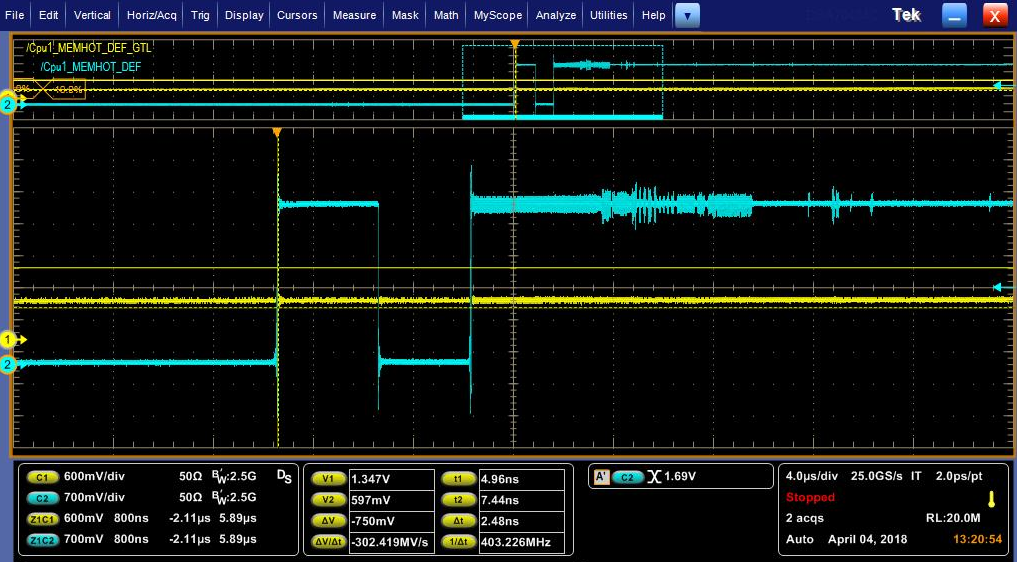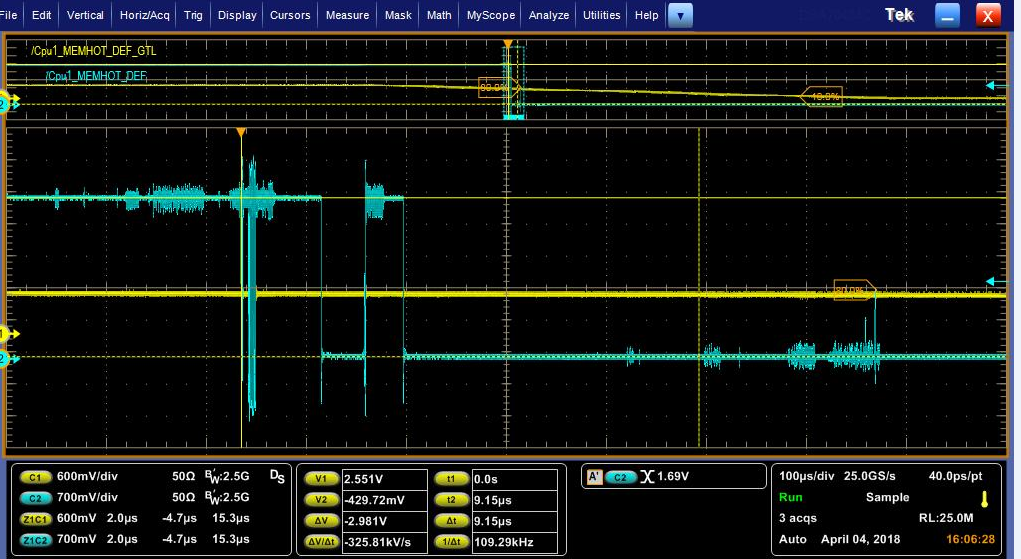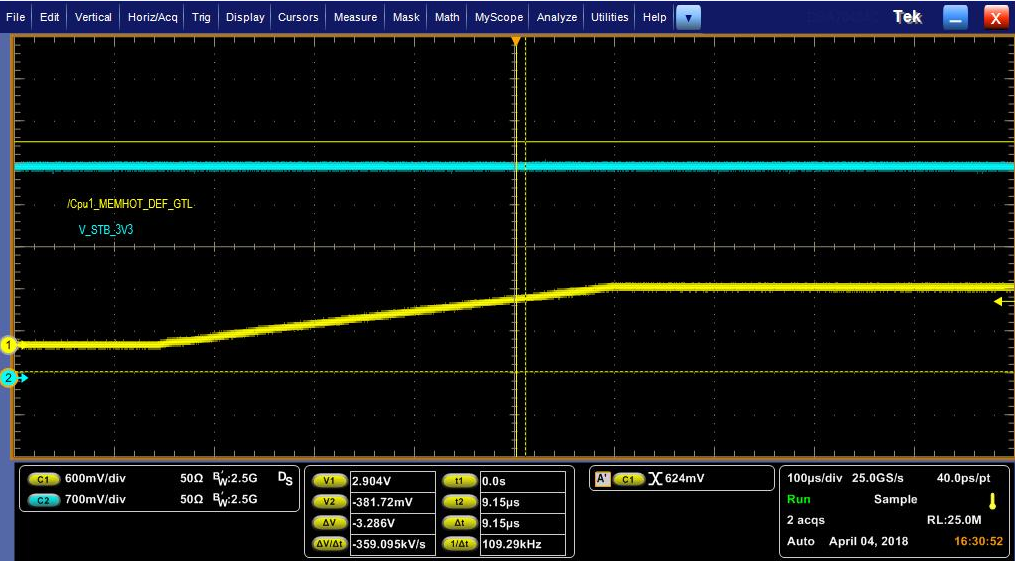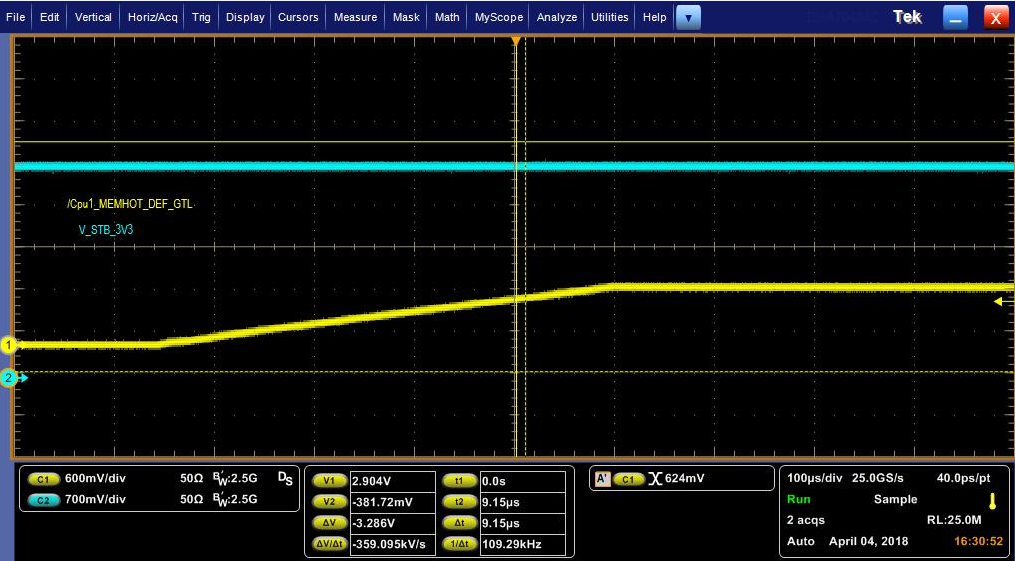Hi team,
My customer find that after powering on the chip, the output of A port will generate a serial of random signal when the B port is logic high.
The schematic is as below:
And the output signal is the purple one.
Could you help to review the schematic and make your comment to this problem?
Lacey
Thanks a lot!





